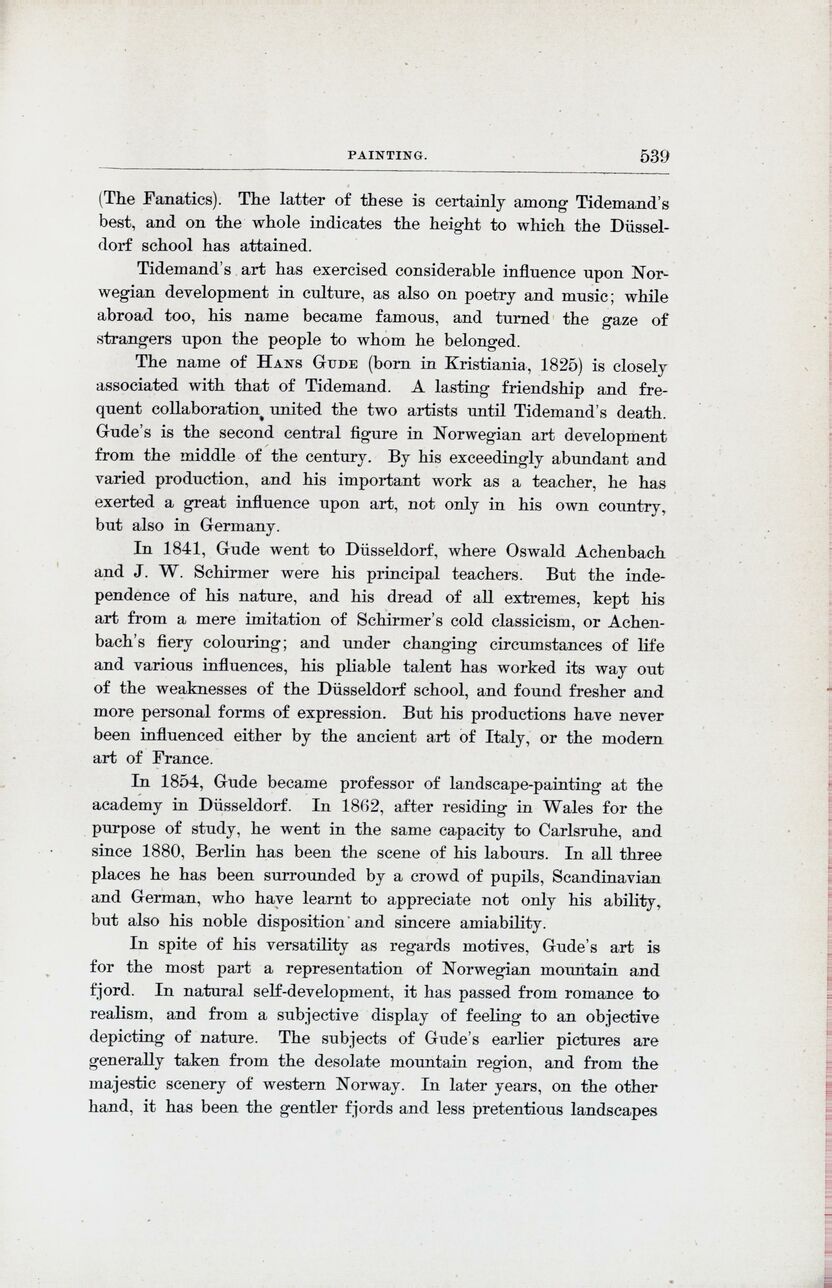
Full resolution (JPEG) - On this page / på denna sida - Painting, by Jens Thiis

<< prev. page << föreg. sida << >> nästa sida >> next page >>
Below is the raw OCR text
from the above scanned image.
Do you see an error? Proofread the page now!
Här nedan syns maskintolkade texten från faksimilbilden ovan.
Ser du något fel? Korrekturläs sidan nu!
This page has been proofread at least once.
(diff)
(history)
Denna sida har korrekturlästs minst en gång.
(skillnad)
(historik)
(The Fanatics), The latter of these is certainly among Tidemand’s
best, and on the whole indicates the height to which the
Düsseldorf school has attained.
Tidemand’s art has exercised considerable influence upon
Norwegian development in culture, as also on poetry and music; while
abroad too, his name became famous, and turned the gaze of
strangers upon the people to whom he belonged.
The name of Hans Gude (born in Kristiania, 1825) is closely
associated with that of Tidemand. A lasting friendship and
frequent collaboration united the two artists until Tidemand’s death.
Gude’s is the second central figure in Norwegian art development
from the middle of the century. By his exceedingly abundant and
varied production, and his important work as a teacher, he has
exerted a great influence upon art, not only in his own country,
but also in Germany.
In 1841, Gude went to Düsseldorf, where Oswald Achenbach
and J. W. Schirmer were his principal teachers. But the
independence of his nature, and his dread of all extremes, kept his
art from a mere imitation of Schirmer’s cold classicism, or
Achenbach’s fiery colouring; and under changing circumstances of life
and various influences, his pliable talent has worked its way out
of the weaknesses of the Düsseldorf school, and found fresher and
more personal forms of expression. But his productions have never
been influenced either by the ancient art of Ttaly, or the modern
art of France.
In 1854, Gude became professor of landscape-painting at the
academy in Düsseldorf. In 1802, after residing in Wales for the
purpose of study, he went in the same capacity to Carlsruhe, and
since 1880, Berlin has been the scene of his labours. In all three
places he has been surrounded by a crowd of pupils, Scandinavian
and German, who have learnt to appreciate not only his ability,
but also his noble disposition and sincere amiability.
In spite of his versatility as regards motives, Gude’s art is
for the most part a representation of Norwegian mountain and
fjord. In natural self-development, it has passed from romance to
realism, and from a subjective display of feeling to an objective
depicting of nature. The subjects of Gude’s earlier pictures are
generally taken from the desolate mountain region, and from the
majestic scenery of western Norway. In later years, on the other
hand, it has been the gentler fjords and less pretentious landscapes
<< prev. page << föreg. sida << >> nästa sida >> next page >>